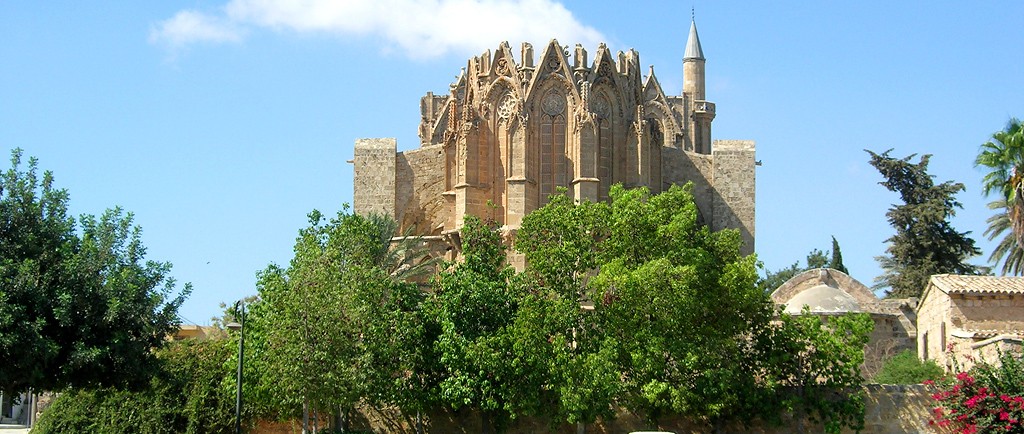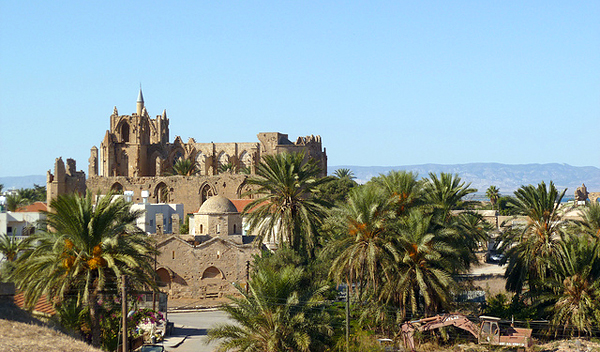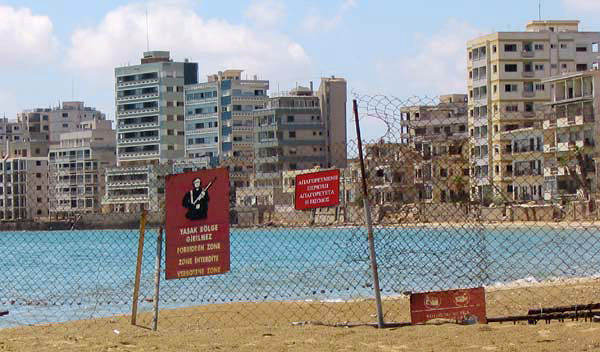A trip to the so-called northern part of Cyprus is a real event for many Greek Cypriots. One would think: what could be simpler? This is not far at all by Russian standards, and the border between the Turkish and the Greek parts is practically transparent, but many people have never crossed it from the moment of its creation in 1974.
The events of that year seem insignificant by international measurements, but I can assure you that for the local people it was a war in the real sense of the word. If you have lived long enough amongst Greek Cypriots, you cannot be impervious to this tragedy. These were my thoughts when I journeyed to Ammochostos for the first time in the ten years that I have lived in Cyprus.
The Journey Starts in Larnaca
Some people combine a journey to Ammochostos with a visit to Kyrenia after crossing the border in Nicosia, and later move to the east of the island, but this makes the trip very long and tiring and will take up the whole day.
I suggest going to Ammochostos from Larnaca. Тhose on holiday in Аyia Napa or Protaras who would want to go with а rented car, can also use this route.
Fans of package trips can go easily with an excursion. Since the distance is really short, there are evening walks around Ammochostos – it matters in the summer as walking in the city under the scorching sun is no fun at all.
In-season in 2013, excursions to Ammochostos cost around 35-40 еuros per person. Regardless of whether you go on your own or with a group, do not forget to take your passport with you.
Along The Border
So, we start our trip from Larnaca, moving along a fast road towards Ayia Napa. It will take you about 15 minutes. Concentrate on the signposts and when you see the name of Ξυλοτύμπου/Xylotimvou, turn left.
You can get to Ammochostos by different roads, but the special feature of this road is that we will be moving close to the border practically all the way – you can see abandoned villages and Turkish watch towers with soldiers clearly.
You can say that I am too easily impressed, but chills run down the spine when you see a man with an automatic gun looking at you when you stop at the road side. The graffiti-painted buildings do not resemble toys any more, and you realize how serious the environment is.
We are driving straight, turn right at the roundabout and move in the direction of the Άγιος Νικόλαος/Agios Nikolaos settlement. In the village of Agios Nikolaos you will cross two other roundabouts and will soon find yourselves at a checkpoint.
Passport Controls
Then you will have to fill in a so called crossing coupon for each person crossing the border. It is on the coupons where a stamp testifying to the entrance and departure from the territory of northern Cyprus will be put, this is why you should keep them until the end of your journey.
It is not necessary for all passengers of a car to present their passports and the coupon personally. The “captain” of your team may go to the window with all the passports and coupons and have all the necessary stamps put in.
Ammochostos
Here we are in Ammochostos or Famagusta. Which is the correct name? Ammochostos (Αμμόχωστος) is the Greek name of the city and the bay located on the south-east shore of Cyprus. It is literally translated as ‘lost in sands, and really, the fairy tale beaches of ancient Salamis, аnd later of Ammochostos always attracted attention.
Part of the Ammochostos region, the Varosha district was one of the most popular beaches of the Mediterranean in 1970.
The Latin name of Famagusta appeared much later, most likely during the time of the Lusignan dynasty rule. Now Turks call the city Magusa or Gazimağusa.
In Search of Othello House
We continue moving straight from along walls of a fortress. When we reach a Т-junction, we turn left and move under the arc of the old city. After driving for another 400 metres we will see a free parking lot to the left. Leaving a car there and moving along the centre of the old city on foot is very helpful.
If you stand with your back to the parking lot, you will see one of the bastions of the ancient city wall straight ahead of you. Turn to the left from the bastion and you will see the Famagusta castle and citadel with the famous tower of Othello, which is part of the city’s fortification buildings.
Everybody knows the tragic story written by Shakespeare about the Moor, Othello, who strangled his wife Desdemona. The events of the tragedy really took place in Cyprus. Of course, you can find no proof of that now, but local people will assure you that a prototype of the Shakespearean character really lived in Famagusta, and this story is no fantasy.
The Castle of Saint Nicholas
You can see the Cathedral of Saint Nicholas from the tower, the main city sight, and you will understand the direction in which you should move further.
The Cathedral of Saint Nicholas is located on the main square in the centre of the old city. A perfect sample of Gothic culture it, like the headless horseman, is deprived of its pointed small towers. While the Turkish authorities rule the territory of Famagusta they never even attempted to renovate this unique architectural monument.
During the Ottoman Empire the church was turned into a mosque. A minaret was added to the main façade and the church was renamed into a Lala Mustafa Pasha mosque, in honour of a warlord who led the siege of the city in 1571.
When you see the barbaric attitude to international heritage, you understand how slim the chances are for the island to become whole again. One of Cyprus’ oldest trees grows next to the cathedral. Evidence shows that it is over 700 years of age – the tree is preserved better than the stone building. Isn’t it paradoxical?
Right opposite the cathedral there are ruins of a Venetian palace. Unfortunately, only the main entrance with the coat of arms of the Governor of the fortress is preserved now.
The Centre of the Old City
If you leave Saint Nicholas Cathedral behind and move to the centre of the square, on the left you will see a small café D&B. If you wish you can try dishes of the Turkish cuisine there. You can pay in euros without any problems, but be careful not to receive change in Turkish money. I would also advise against using credit cards.
You will see the Cathedral of Saint Apostles Peter and Paul just 200 metres away from the Cathedral of Saint Nicholas. It is also badly preserved, but one can imagine how grand the building used to be by what has remained of it. The cathedral was built in 1359 with the money of a Byzantine merchant, Simone Nostrano.
In 1571, during the Ottoman Empire rule, the cathedral shared the fate of Saint Nicholas cathedral. It was refurbished into a mosque and named after an Admiral of the Ottoman Empire, Sinan Pasha.
During British colonization it was used to store potatoes and grain. In 1967 it was used as a city council. Now it is a city library.
You can walk further from the cathedral along small streets. It is quite difficult to lose your way, and you will return to the square without any difficulty.
Going Home Happily and Sadly
We should say that the old part of the city is literally paved with ancient buildings and ruins. This is simultaneously a mesmerizing and sad sight. It is obvious that little money is allocated to maintain this antiquity, if any at all. Some shrines have a terrible fate. You feel bitter because you cannot change the situation. I thought about it and I had a very strong wish to go back to the Greek side, which I did.


